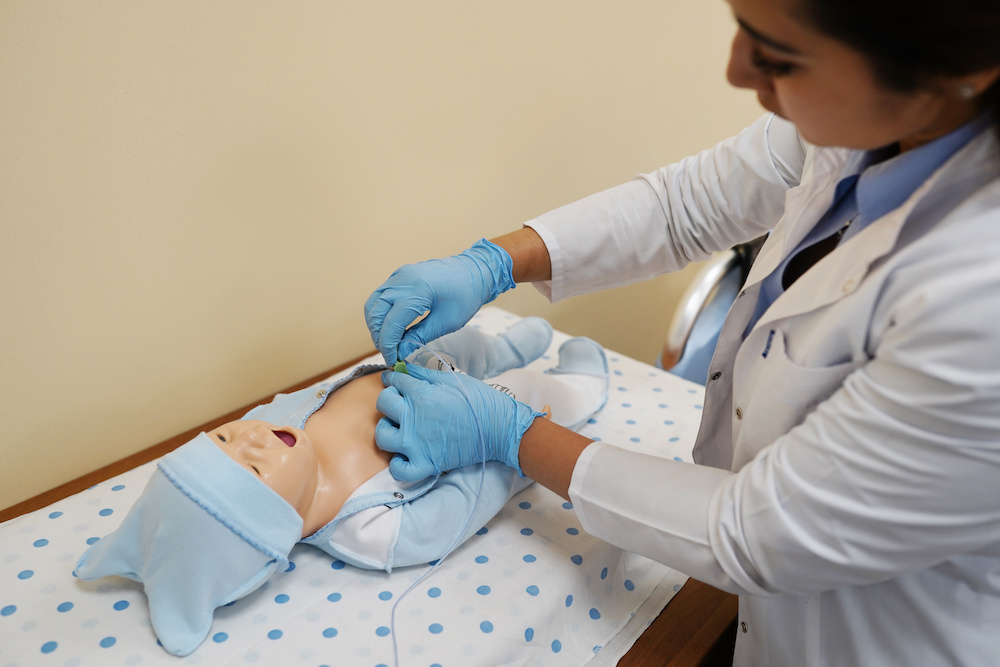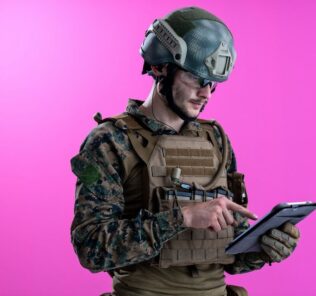What is the Role of Simulation in Healthcare Education?
The role of simulation in healthcare education is to transition an academic learner to a practicing clinician. However, this is a complex process of development, so the best way to understand this transition is to consider the stages a clinical learner goes through to become a competent healthcare provider. Learners cannot possibly grasp all aspects of their training at once and as such, the healthcare simulation events they experience should be designed with the learners’ exact stage in mind. While the Simulation-Based Learning (SBL) should be challenging, the requirements of the experience should certainly be within reach of the learner. With a strong grasp of learner formation, the healthcare simulation instructor can properly apply the different types of clinical simulation in relevant ways at each stage.
Every health educator should visit a residential construction site at least once to understand how building a home happens in stages. Walls cannot come up without a foundation. Roof tiles cannot be laid without trusses in place. This may seem obvious but healthcare educators often miss the fact that their learners’ formation, too, happens in stages. Building blocks must be laid in proper order and in progressive steps for the learner to move well through their training. With this in mind, a strong understanding of learner formation is the key to grasping how clinical simulation is used to transition learners to practice.
In the context of learning stages, the term “transition to practice” is an important one to grasp. “Transition to practice” describes the period in which an academic trainee turns into an independent, patient-facing provider. While this may sound conceptually simple, the reality of making that transition requires the learner to grapple with in-depth didactic knowledge, experiential learning and complex decision-making to result in becoming a provider who has strong clinical judgment. Since this process is lengthy, elaborate and full of milestones, it can be helpful to see it as occurring in several broad stages.
Sponsored Content:
Within these stages, the simulationist must consider which type of clinical simulation is most appropriate. In reference to learner progression, there are two broad categories to mention: “formative” versus “summative” healthcare simulations. A formative clinical simulation is one that assumes the learner is still in the process of learning. Mistakes are common in this type of experience, and may even be encouraged so that learners can internally discover and evaluate the mental map they are using to make decisions. A summative experience, on the other hand, wants to assess how much learning has taken place to a certain point. Knowing when to use either of these comes down to understanding how much of a cognitive load a learner could productively apply to get maximum learning from the experience.
Using Healthcare Simulation for “The Newbies”
“The Newbie” stage describes the first step in a clinician’s journey toward becoming a practicing provider. In this stage, they are often learning the basics of anatomy, physiology, pathology and potentially pharmacology. This learning period aims to imprint complex theoretical concepts into long-term memory. Whereas the classical model of training accomplishes this using lectures, textbooks, note cards, rote memorization and examinations, the academic environment is becoming increasingly accustomed to the idea of using clinical simulation in tandem to these other methodologies.
However, when healthcare simulations are used at this stage, they are often simplified to show the impact of basic decisions on patient outcomes. An example of this might be a simple scenario wherein a learner chooses a drug and then sees the physiologic impact of its administration to a patient. When using clinical simulations at this stage, they are very often formative in nature.
Sponsored Content:
Using Healthcare Simulation for “The Rookies”
As learners begin to understand more about the nature of the human body and how it interacts with treatments, they are often hungry to learn more. At this stage, the learner is often taking the basics that they’ve learned and seeing how they apply to specialties, disease processes and distinct treatment environments. Learners are just beginning to grasp the complexity of all the moving pieces of the healthcare environment, team dynamics, patient communication and working in an interprofessional context.
As such, the healthcare simulations used at this stage reflect this increasing complexity. They often serve to highlight how one decision does not have only one outcome, but many. Instead of a simple medication administration, the learner may now be expected to perform a thorough assessment, form a differential diagnosis, consider the vast array of treatment options available, administer a medication, and then see the resultant impact on the patient’s physiological, emotional and socioeconomic status. These clinical simulations, however, tend to still be formative in nature.
Using Healthcare Simulation for “The New Initiates”
This last stage does not externally appear very different from the last one. Rather, the difference has everything to do with the progression happening in the learners’ minds. With each clinical simulation experience, they are adding a bit more to the puzzle of what it means to be an independent, decision-making provider. At this point, learners are right at the cusp of becoming licensed or certified in their profession and officially entering the workforce. Due to this high expectation, the clinical simulations used in this period tend to approach learners assuming they are summatively synthesizing everything they’ve learned up to this point.
That said, the last stage is also all about practice, practice, practice! To assume that they will grasp the full nuance of their professional practice at this point would be naive, so the focus is on reducing the potential of learners making serious medical errors by developing strong habits of listening, contemplating actions thoroughly and debriefing after seeing the impacts of their choices. These are the types of behaviors that effective healthcare simulation promotes, especially when done with a high degree of repetition to establish lifelong trends.
Clinical simulation being used in healthcare education looks different at each stage of a learner’s journey. The ultimate key to all of it is being in tune with learners at the cohort and individual level. Just like those learners are being trained to listen and pay attention through clinical simulation, the healthcare instructor is asked to do the same — pay close attention to what is needed at every stage for each of their learners as they near their transition to practice. When done well, the instructor gets to be a part of a unique type of construction — building providers that will be a home for many patients to come.
Learn More About Clinical Simulation
Nathan Costiuc, MSN, APRN, FNP-BC, is a Nurse Practitioner and Healthcare Simulation Educator. He began his career delivering clinical simulation to nursing students, quickly realizing the industry’s potential to impact modern training for all healthcare professionals. In navigating better ways to deliver clinical simulation, Costiuc entered into the world of virtual reality, and now works as a Clinical Education Specialist for Oxford Medical Simulation. His passion is in using innovative methods and emerging technologies to reduce medical error, solve practical problems, and improve patient care. He also actively works with disabled veterans in the clinical setting.
Sponsored Content:




















